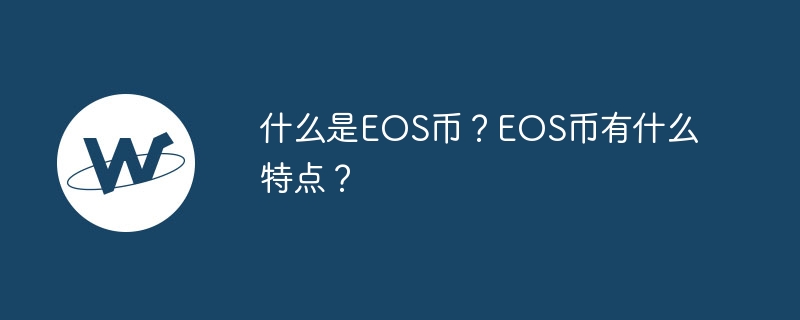php Xiaobian Yuzai will take you to learn about EOS coins! EOS currency is a digital currency based on blockchain technology and has the characteristics of fast transactions, zero handling fees, and strong scalability. EOS coins are different from traditional cryptocurrencies in that they use the DPoS consensus algorithm to achieve high concurrent transaction processing and support smart contracts and other functions. In addition, EOS currency also has a strong ecosystem and community support, providing users with more application scenarios and development space. EOS coin is a dark horse in the field of digital currency and has attracted much attention!

EOS Coin: High-Performance Blockchain Platform
EOS Coin is the native token of the EOS blockchain platform, first launched on June 26, 2017 issued. The EOS blockchain platform aims to build a high-performance, scalable and secure blockchain ecosystem to solve the challenges of current blockchain platforms in scalability, throughput and latency. EOS is designed to provide developers with a flexible and easy-to-use platform that enables them to build a variety of distributed applications without worrying about performance bottlenecks and high transaction fees. The EOS blockchain uses the Delegated Proof of Stake (DPOS) consensus mechanism to achieve high efficiency by handing over the management of the network to selected representatives
Features of EOS coins:
The development prospects of EOS currency:
The EOS blockchain is a very potential blockchain platform with high performance, scalability, security, flexibility, etc. Features. As the native token of the EOS blockchain, EOS currency has high investment value. As the EOS blockchain continues to develop, the price of EOS coins may also continue to rise.
Note: The above content is for reference only and does not constitute investment advice. The cryptocurrency market is highly volatile, so investment needs to be cautious.
The above is the detailed content of What is EOS coin? What are the characteristics of EOS coins?. For more information, please follow other related articles on the PHP Chinese website!
 What are the main characteristics of computers?
What are the main characteristics of computers?
 Formal digital currency trading platform
Formal digital currency trading platform
 Top ten digital currency exchanges
Top ten digital currency exchanges
 What is cryptocurrency kol
What is cryptocurrency kol
 What is blockchain web3.0
What is blockchain web3.0
 Top 30 global digital currencies
Top 30 global digital currencies
 Digital currency quantitative trading
Digital currency quantitative trading
 Top 10 most secure digital currency exchanges in 2024
Top 10 most secure digital currency exchanges in 2024




